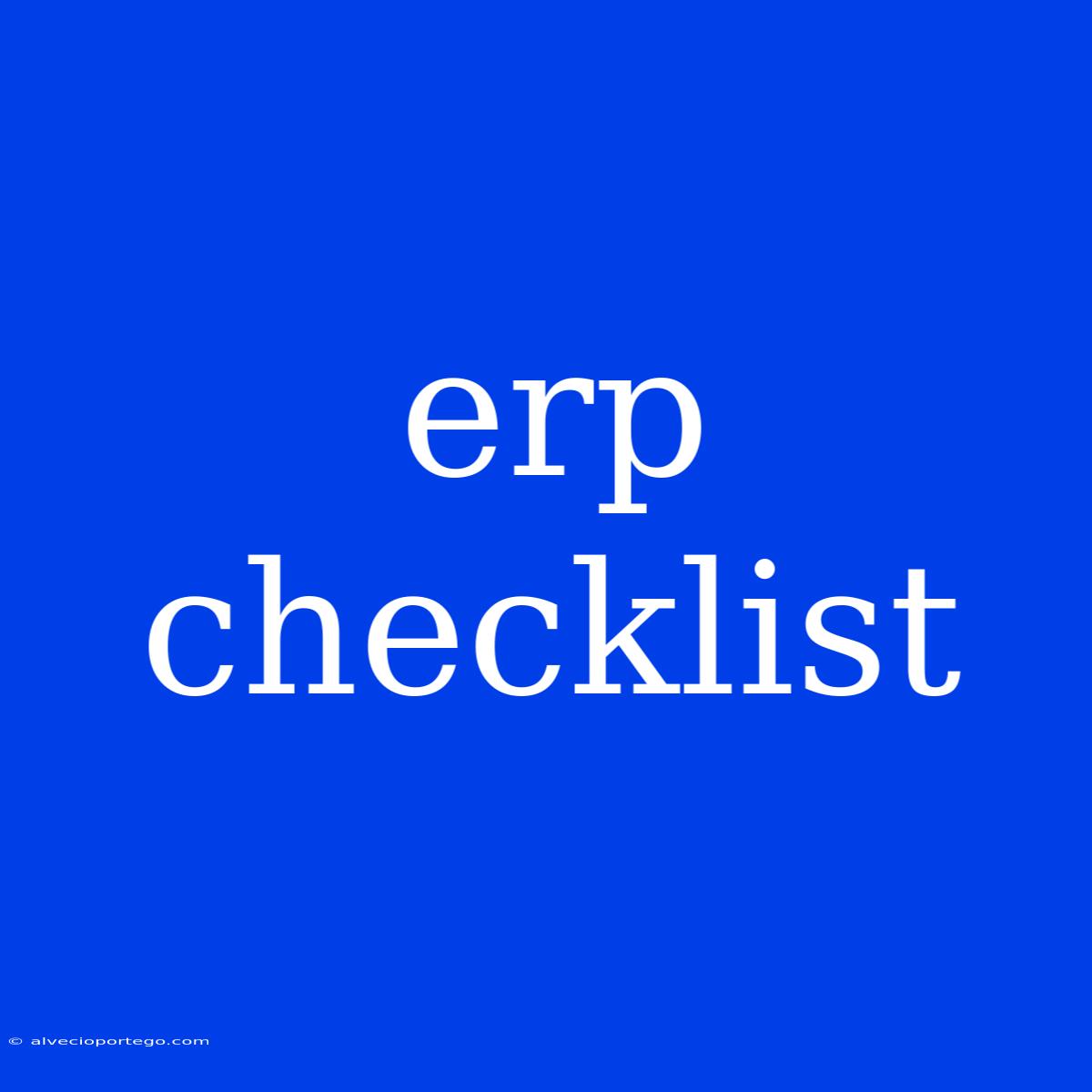ERP Checklist: A Comprehensive Guide to Successful Implementation
An Enterprise Resource Planning (ERP) system can revolutionize your business by integrating various departments and processes, improving efficiency, and enhancing decision-making. However, implementing an ERP system is a complex undertaking that requires careful planning and execution.
This checklist provides a comprehensive guide to navigate the ERP implementation journey smoothly and ensure a successful outcome:
I. Preparation Phase
1. Define Business Objectives:
- Clearly articulate your goals for implementing ERP: What specific problems are you trying to solve? What business outcomes do you hope to achieve?
- Identify key performance indicators (KPIs): How will you measure the success of your ERP implementation?
- Define scope and limitations: Which departments and processes will be included in the ERP system?
2. Conduct a Thorough Needs Assessment:
- Analyze existing business processes: Identify bottlenecks, inefficiencies, and areas for improvement.
- Gather data from all relevant stakeholders: Employees, managers, and executives should provide input.
- Evaluate current technology infrastructure: Ensure compatibility with the chosen ERP solution.
3. Select the Right ERP Solution:
- Research and compare different ERP vendors: Consider factors like functionality, pricing, implementation experience, and industry expertise.
- Evaluate vendor proposals: Carefully review vendor proposals and request demonstrations.
- Seek feedback from existing clients: Get insights from other companies using the same ERP solution.
4. Build a Strong Implementation Team:
- Assemble a team of skilled professionals: Include representatives from IT, finance, operations, and other relevant departments.
- Establish clear roles and responsibilities: Ensure everyone understands their contribution to the project.
- Provide adequate training and support: Empower the team to handle challenges effectively.
II. Implementation Phase
5. Develop a Detailed Implementation Plan:
- Set realistic timelines and milestones: Break down the project into manageable phases.
- Establish communication protocols: Ensure transparent and timely information sharing.
- Plan for potential challenges: Anticipate and mitigate risks.
6. Data Migration:
- Develop a data migration strategy: Identify data sources, map data fields, and perform data cleansing.
- Test data migration processes: Ensure data accuracy and completeness.
- Plan for data backups and recovery: Securely store and protect sensitive information.
7. System Configuration and Customization:
- Configure the ERP system according to your specific requirements: Adjust settings, modules, and workflows.
- Train users on the new system: Provide hands-on training and support to ensure adoption.
- Develop and implement user manuals and guides: Create comprehensive documentation for reference.
8. Integration with Existing Systems:
- Identify existing systems requiring integration: Ensure seamless data flow between systems.
- Develop integration strategies: Choose appropriate integration methods (e.g., API, middleware).
- Test integrations thoroughly: Verify data accuracy and communication between systems.
III. Go-Live and Beyond
9. System Testing and Validation:
- Perform thorough system testing: Ensure functionality, performance, and security.
- Conduct user acceptance testing (UAT): Get feedback from end users.
- Develop a go-live strategy: Plan for system cutover and user transition.
10. Post-Implementation Support and Optimization:
- Provide ongoing user support and training: Address user queries and assist with troubleshooting.
- Monitor system performance and identify areas for improvement: Regularly review KPIs and make adjustments as needed.
- Continuously optimize the ERP system: Enhance functionalities and streamline processes to maximize efficiency.
Conclusion
Following this ERP checklist can significantly improve the chances of a successful implementation. Remember that communication, collaboration, and flexibility are crucial throughout the entire process. By proactively addressing challenges and adapting to changing requirements, you can achieve the desired benefits of an ERP system and drive your business to new heights.

